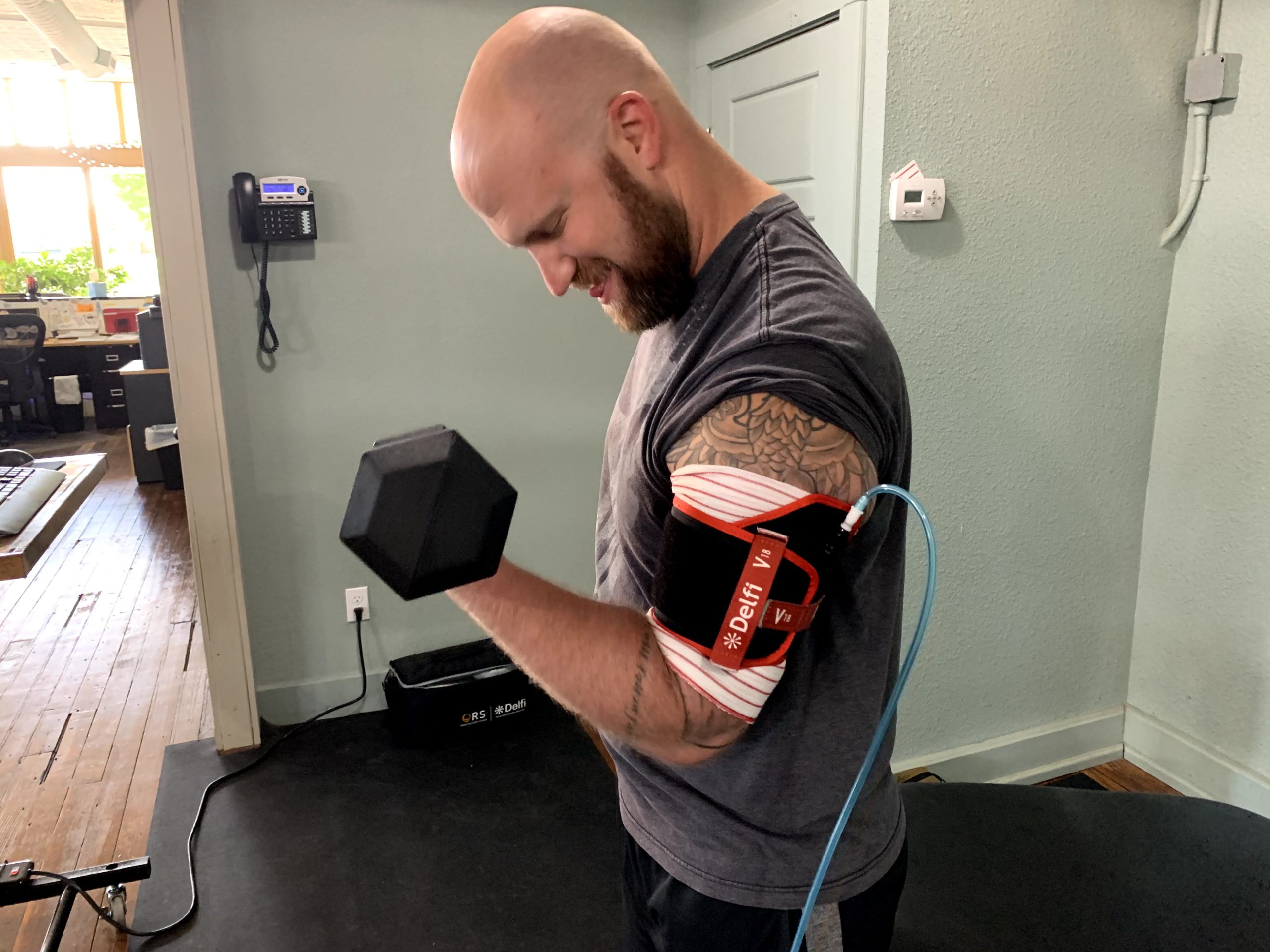BFR: Maximizing Output
Blood Flow Restriction, or BFR, is a process which many athletes can use whether it be for improving their strength training, or even recovering from an injury. Being able to properly use BFR can provide many significant benefits to an athlete.

What is BFR?
BFR stands for blood flow restriction, which means that a band, which is typically inflated is wrapped around a certain part of your body while exercising. By decreasing the Blood Flow to this area, it can allow for the muscle to become stronger quicker.
How Does BFR Work?
BFR works by decreasing the amount of blood that both carries oxygen to your muscle, and carries different chemicals like lactic acid away from the muscle. By doing this, you are able to create a low oxygen environment for the muscle, which allows it to be broken down easier, and therefore built back stronger than it was before.
Is BFR Dangerous?
When hearing about BFR, a common concern that many people may have about it would be blood clots or hypoxemia within the muscle. Fortunately however, many studies have found that BFR does not increase these risks, and the studies behind this can be found here: Is Blood Flow Restriction Training Safe? – The Barbell Physio. BFR is a common and safe tool in many Athletic Training Rooms.
How Does BFR Help an Athlete?
BFR can help an athlete in many ways. It is used largely for strength training, as it can help cause muscles to hypertrophy 20% to 30% quicker according to What Is Blood Flow Restriction Training? – Cleveland Clinic. It can also be used as a valuable tool in injury rehabilitation, as it can help a muscle to exercise and heal faster without causing a higher risk of reinjury.

Ultimately, BFR is both a safe and effective tool for a training athlete. It could help them to increase their muscle size and efficiently quickly, as well as recover from injuries in a timely manner.

Leave a Reply